
How to Use AOD4184: Examples, Pinouts, and Specs
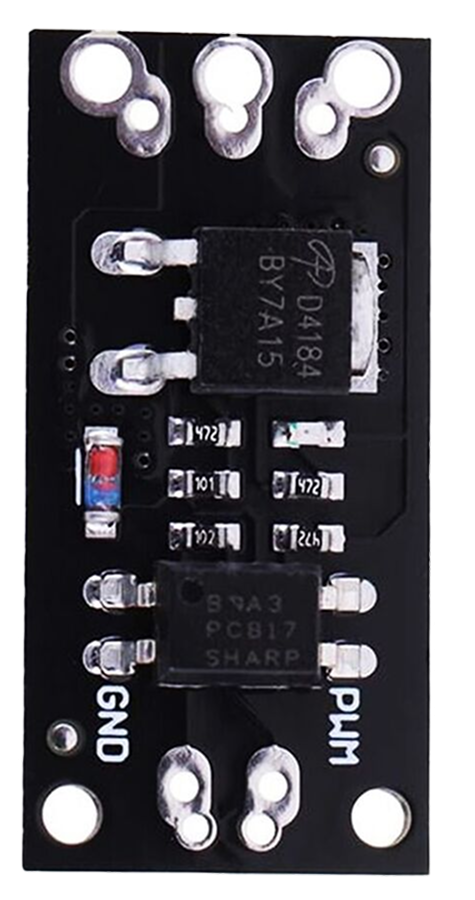
 Design with AOD4184 in Cirkit Designer
Design with AOD4184 in Cirkit DesignerIntroduction
The AOD4184 is an N-channel MOSFET designed for high-speed switching applications. It features low on-resistance and fast switching capabilities, making it ideal for use in power management systems, DC-DC converters, motor drivers, and other high-efficiency power circuits. Its robust design and high current-handling capacity make it a popular choice for both industrial and hobbyist applications.
Explore Projects Built with AOD4184
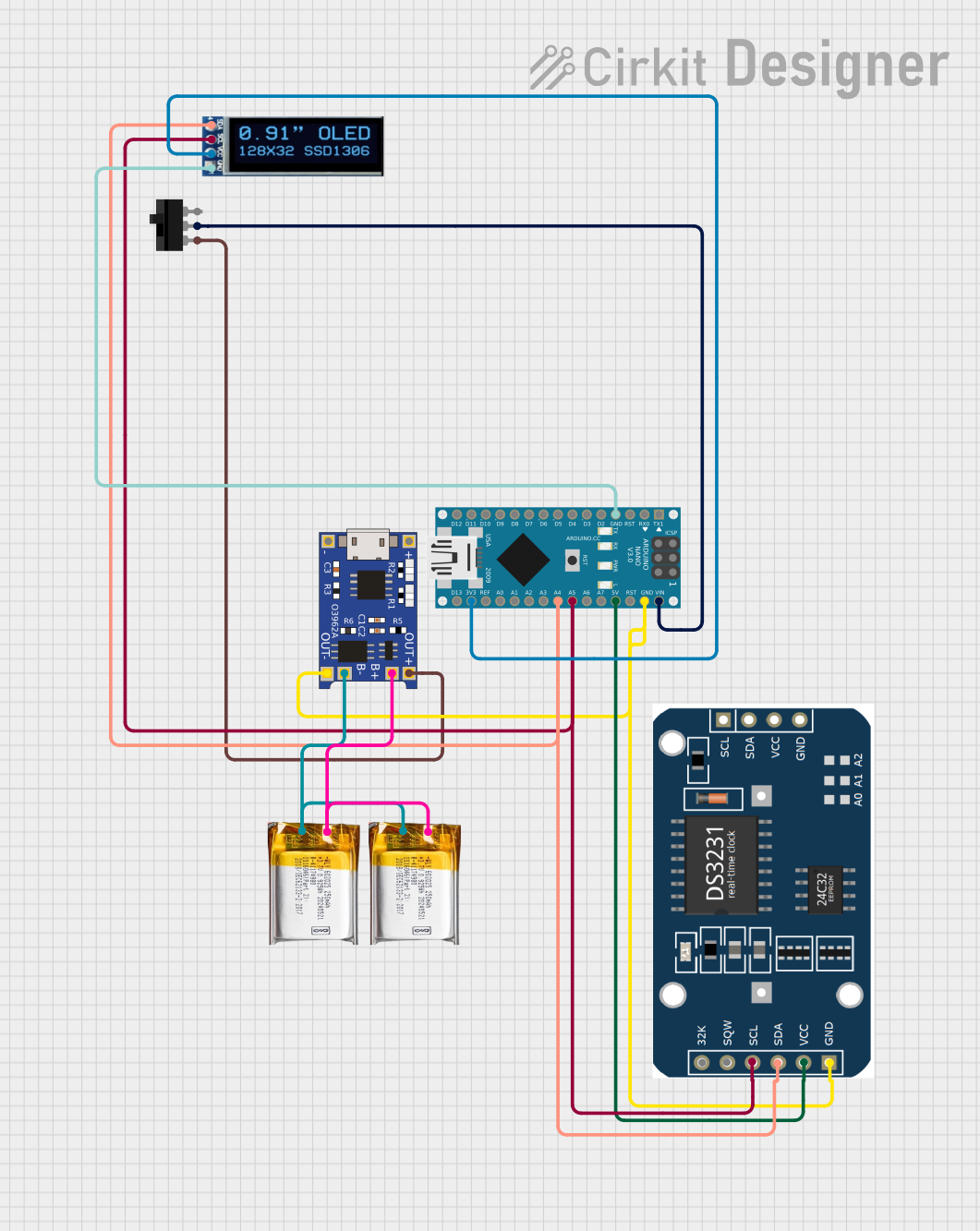
 Open Project in Cirkit Designer
Open Project in Cirkit Designer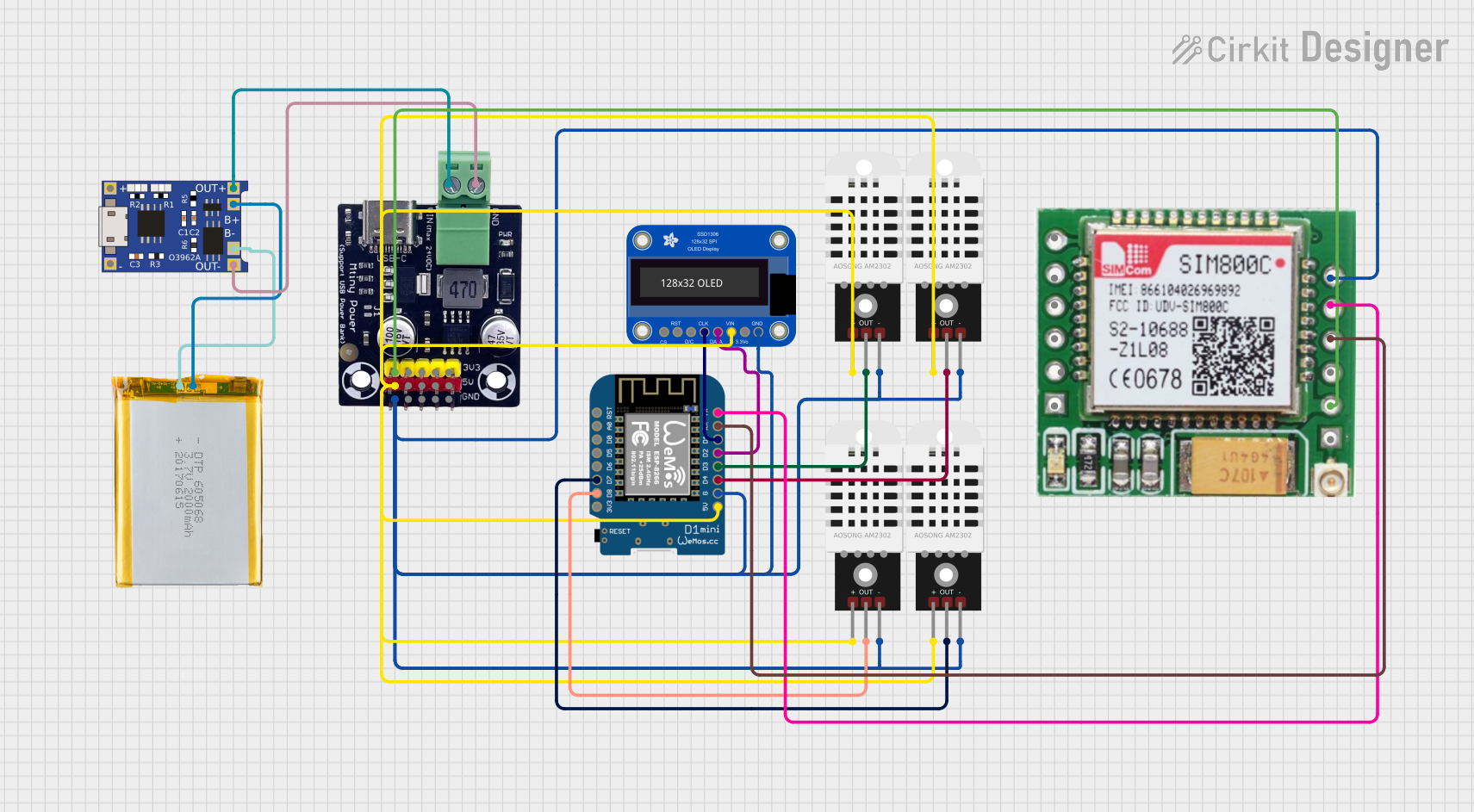
 Open Project in Cirkit Designer
Open Project in Cirkit Designer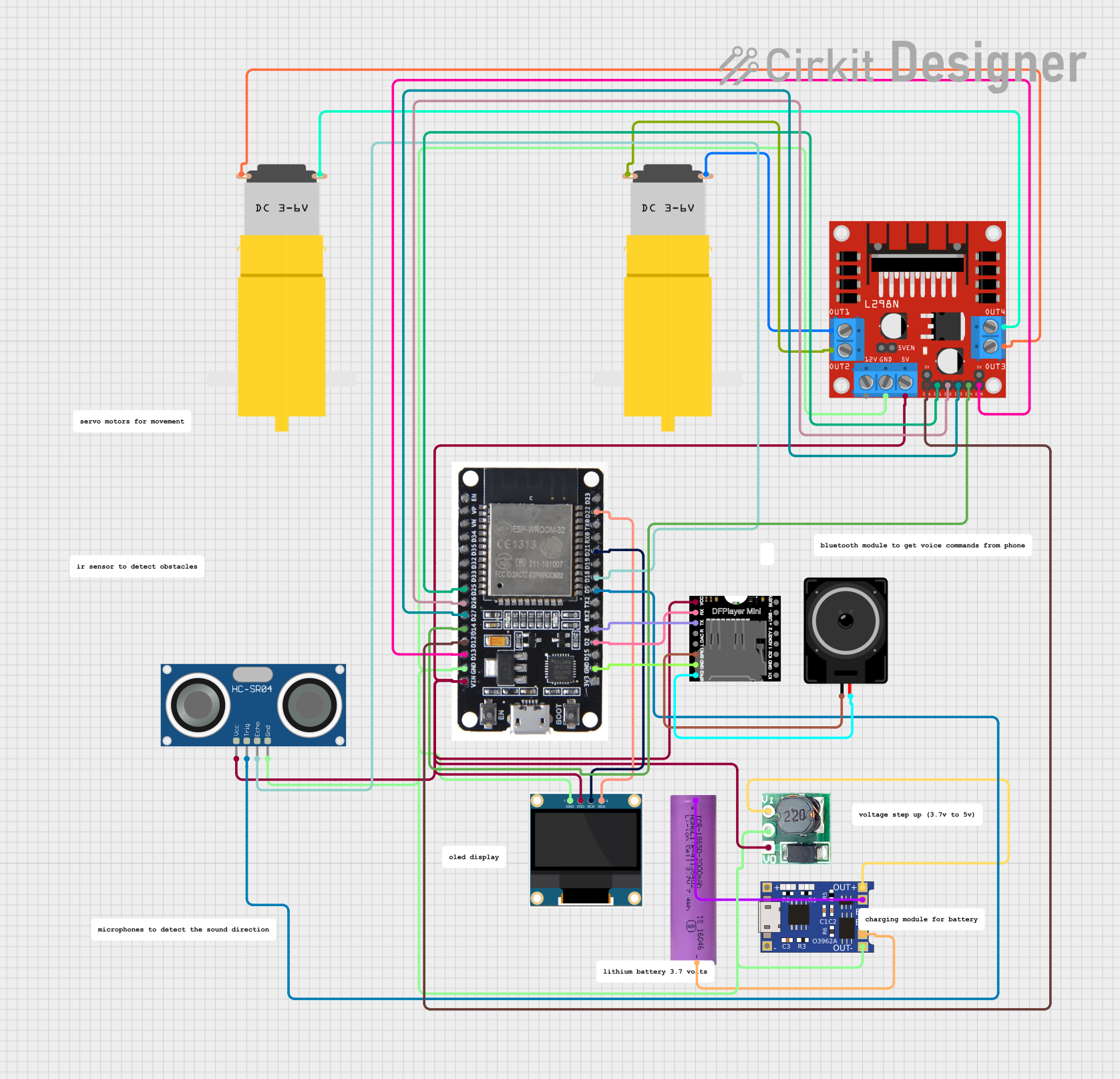
 Open Project in Cirkit Designer
Open Project in Cirkit Designer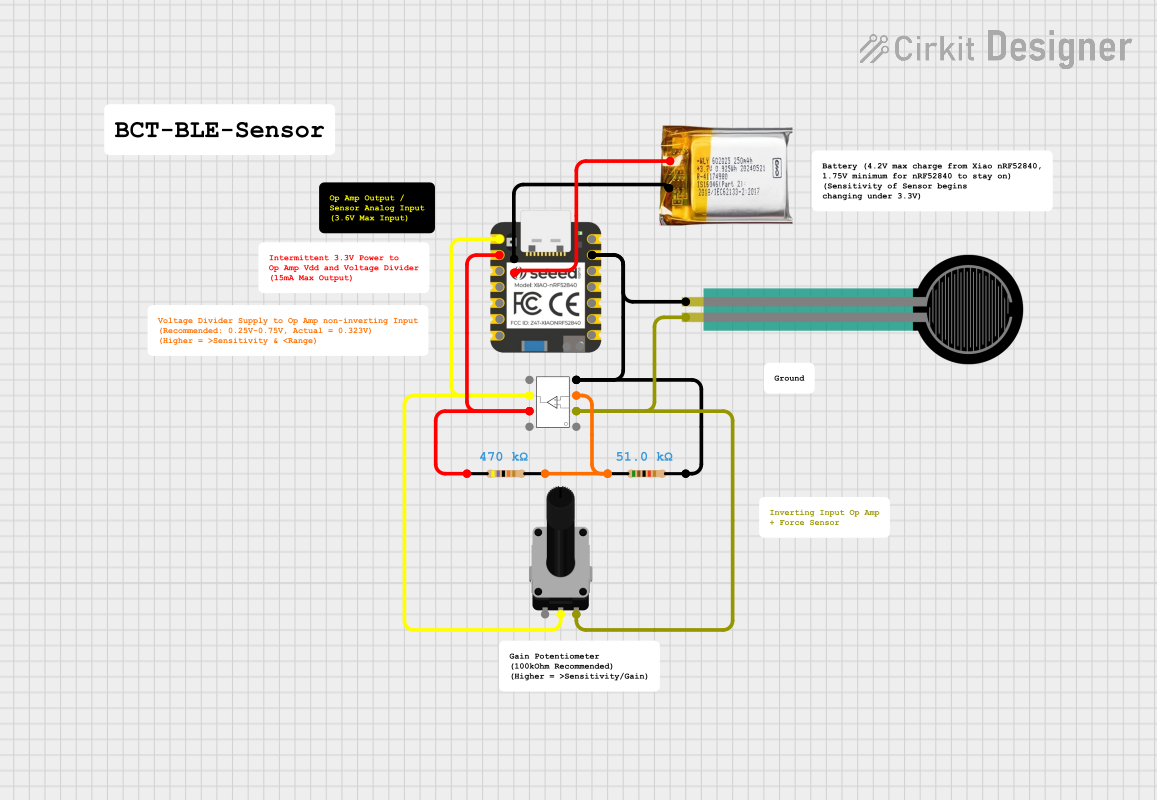
 Open Project in Cirkit Designer
Open Project in Cirkit DesignerExplore Projects Built with AOD4184

 Open Project in Cirkit Designer
Open Project in Cirkit Designer
 Open Project in Cirkit Designer
Open Project in Cirkit Designer
 Open Project in Cirkit Designer
Open Project in Cirkit Designer
 Open Project in Cirkit Designer
Open Project in Cirkit DesignerCommon Applications
- DC-DC converters
- Motor control circuits
- Power management in embedded systems
- Battery-powered devices
- High-efficiency switching regulators
Technical Specifications
The AOD4184 is optimized for performance in low-voltage, high-current applications. Below are its key technical details:
| Parameter | Value |
|---|---|
| Drain-Source Voltage (VDS) | 40V |
| Gate-Source Voltage (VGS) | ±20V |
| Continuous Drain Current (ID) | 50A (at 25°C) |
| Pulsed Drain Current (IDM) | 200A |
| On-Resistance (RDS(on)) | 6.5mΩ (at VGS = 10V) |
| Total Gate Charge (Qg) | 36nC |
| Power Dissipation (PD) | 50W |
| Operating Temperature Range | -55°C to +175°C |
| Package Type | TO-252 (DPAK) |
Pin Configuration
The AOD4184 is typically available in a TO-252 (DPAK) package. The pinout is as follows:
| Pin Number | Pin Name | Description |
|---|---|---|
| 1 | Gate | Controls the MOSFET switching state |
| 2 | Drain | Main current-carrying terminal |
| 3 | Source | Connected to ground or load return |
| Tab | Drain | Electrically connected to the drain |
Usage Instructions
The AOD4184 is straightforward to use in a variety of circuits. Below are the steps and considerations for incorporating it into your design:
Basic Circuit Connection
- Gate Control: Connect the gate pin to a control signal (e.g., from a microcontroller or driver circuit). Use a resistor (typically 10Ω to 100Ω) in series with the gate to limit inrush current and prevent oscillations.
- Drain Connection: Connect the drain pin to the positive side of the load.
- Source Connection: Connect the source pin to ground or the negative side of the load.
Important Considerations
- Ensure the gate voltage (VGS) is within the specified range (±20V). For optimal performance, drive the gate with at least 10V.
- Use a proper heatsink or PCB thermal design to dissipate heat, especially when operating at high currents.
- Avoid exceeding the maximum drain-source voltage (40V) to prevent damage to the MOSFET.
- For high-speed switching, minimize the gate capacitance by using a low-impedance gate driver.
Example: Using AOD4184 with Arduino UNO
The AOD4184 can be used to control a DC motor with an Arduino UNO. Below is an example circuit and code:
Circuit Diagram
- Connect the drain of the AOD4184 to one terminal of the motor.
- Connect the source to ground.
- Connect the other terminal of the motor to the positive supply (e.g., 12V).
- Connect the gate to an Arduino digital pin (e.g., D9) through a 100Ω resistor.
- Place a flyback diode (e.g., 1N4007) across the motor terminals to protect against voltage spikes.
Arduino Code
// AOD4184 MOSFET control example
// This code demonstrates how to use the AOD4184 to control a DC motor
// using PWM from an Arduino UNO.
const int motorPin = 9; // Pin connected to the MOSFET gate
void setup() {
pinMode(motorPin, OUTPUT); // Set the motor pin as an output
}
void loop() {
analogWrite(motorPin, 128); // Set motor speed to 50% (PWM value: 128)
delay(5000); // Run motor for 5 seconds
analogWrite(motorPin, 0); // Turn off the motor
delay(5000); // Wait for 5 seconds
}
Best Practices
- Use a gate driver IC for high-frequency switching to ensure fast and efficient operation.
- Add a pull-down resistor (10kΩ) between the gate and source to prevent accidental turn-on due to floating gate voltage.
- Use decoupling capacitors near the power supply to reduce noise and voltage spikes.
Troubleshooting and FAQs
Common Issues
MOSFET Overheating
- Cause: Insufficient heatsinking or excessive current.
- Solution: Use a heatsink or improve PCB thermal design. Ensure the current is within the rated limit.
MOSFET Not Switching
- Cause: Insufficient gate voltage or incorrect wiring.
- Solution: Verify the gate voltage is at least 10V for full enhancement. Check the circuit connections.
Motor Not Running
- Cause: Faulty wiring or damaged MOSFET.
- Solution: Check all connections and replace the MOSFET if necessary.
Voltage Spikes Damaging the MOSFET
- Cause: Inductive loads generating back EMF.
- Solution: Add a flyback diode across the load to suppress voltage spikes.
FAQs
Q: Can the AOD4184 be used with 3.3V logic?
A: The AOD4184 requires a gate voltage of at least 10V for optimal performance. Use a level shifter or gate driver if controlling it with 3.3V logic.
Q: What is the maximum switching frequency?
A: The maximum switching frequency depends on the gate driver and load conditions. With a proper gate driver, it can operate in the hundreds of kHz range.
Q: How do I calculate the power dissipation?
A: Power dissipation can be estimated using the formula:
P = I2 × RDS(on)
where I is the drain current and RDS(on) is the on-resistance.
By following this documentation, you can effectively integrate the AOD4184 into your electronic designs and troubleshoot common issues.